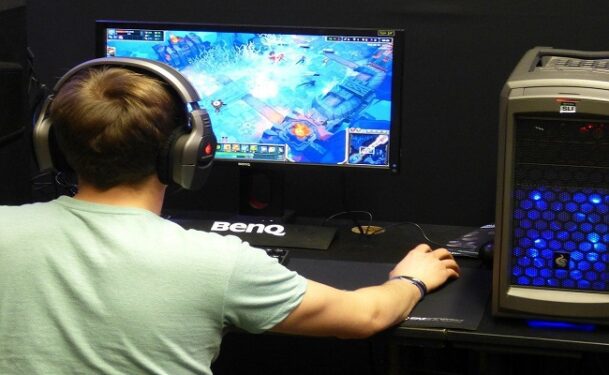Is there anything more annoying than watching your laptop go into sleep mode by itself while you’re playing your favorite games? Such unexpected events can ruin all the fun. So, let’s see how you can get rid of the problem.
Why does my computer keep going to sleep while I’m playing games?
Check your battery and charger
Inspect your charger and power cable for any signs of damage. If they’re faulty, your laptop battery won’t charge. As a results, your laptop will automatically enter Sleep mode when the battery has reached a critically low threshold. Maybe the power cable is not firmly connected to the wall socket or the connector that goes into the laptop is broken.
Many high-end gaming laptops sometimes use more power than their AC adapter can provide while you’re gaming. As a result, they drain battery power faster than the AC adapter can charge it, even though your laptop is plugged in. Your laptop could go into sleep because of a low battery.
Check if your computer gets too hot
The fact that gaming on laptops generates a lot heat is not breaking news. Overclocking your laptop puts a lot of pressure on the hardware and generates even more heat. As a fail-safe mechanism, your laptop will shut down instantly or enter sleep mode when overheated. Double-check to see if your laptop indeed enters standby or simply switches off without a warning.
Place your machine in a well-ventilated place, making sure that nothing blocks the air flow to and from the fans. Using a laptop cooling pad while gaming is an excellent idea.
Check your fans and remove any specks of dust that accumulated inside your laptop from the environment around it. Dust will cause your fans to perform poorly and trap heat inside.
Additionally, disable your overclocking software, turn off your game mods and check if you notice any improvements.
Update your display driver
If your display drive is malfunctioning, that could explain why your laptop enters Sleep mode by itself or the display dims unexpectedly.
Launch the Device Manager, and click on Display adapters. Right-click on your graphics driver, and select Update driver. Restart your laptop and check if the issue persists.
On the other hand, of the issue started after updating the display driver, go back to the previous version and check if the issue still occurs.
Change your Power options
- Type Power in the Windows search bar and click on Power and sleep settings.
- Then set all the Sleep options to Never to make sure none of your settings enable Sleep when using your laptop.
- Scroll down to Additional power settings.
- Change your power plan and check if you notice any improvements. For example, if you’re already using the High performance plan, set it to Balance and check the results.
Run the Power troubleshooter
- Type troubleshooter in the Windows search field and select Troubleshoot settings.
- Click on Additional troubleshooters.
- Run the Power troubleshooter and check if you can get more details about this problem.
Are you wearing a metallic bracelet with a magnet?
If you’re wearing a bracelet with a magnet and it touches the mousepad area, the laptop could think the lid is closed and enter Sleep mode. Take your bracelet off and check if the issue is gone.
Did these tips help you get rid of the random Sleep mode issues on your laptop? Let us know in the comments below.
